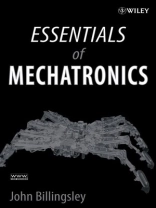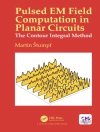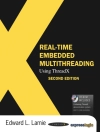Learn how to study, analyze, select, and design a successful
mechatronic product
This innovative, cutting-edge publication presents the essential
nature of mechatronics, a field at the crossroads of information
technology and mechanical and electrical engineering. Readers learn
how to blend mechanisms, electronics, sensors, control strategies,
and software into a functional design. Given the breadth that the
field of mechatronics draws upon, this publication provides a
critical service to readers by paring down the topics to the most
essential ones.
A common thread throughout the publication is tailoring performance
to the actual needs of the user, rather than designing ‚by the
book.‘ Practical methods clarify engineering trade-offs needed to
design and manufacture competitive state-of-the-art products and
systems.
Key features include:
* Easy-to-construct set of laboratory experiments to give readers
practice in controlling difficult systems using discrete-time
algorithms
* Essentials of control theory, concentrating on state-space and
easily constructed simulations in Java Script, including typical
mechatronic systems with gross nonlinearities where linear methods
give the ‚wrong answer‘
* Hot topics that include advances in the automotive, multimedia,
robotics, defense, medical, and consumer industries
* Author-provided Web site at www.Ess Mech.com offers additional
resources, including videos, dynamic simulation examples, software
tools, and downloads
There are hundreds of choices involved in all but the simplest of
mechatronic design tasks. Using this publication as a reference,
electrical, mechanical, and computer designers and engineers can
find the most efficient, cost-effective methods to transform their
goals into successful commercial products. With its use of
laboratory experiments, this publication is also recommended as a
graduate-level textbook.
Author Web site located at www.Ess Mech.com provides in-depth
support material that includes links to simulations for modeling
dynamic systems with real-time interactions, image processing
examples, and 3D robot modeling software, enabling readers to
‚construct‘ and manipulate their own mechanism as well as other
useful links.
Inhaltsverzeichnis
Preface.
Acknowledgments.
1. Introduction.
1.1 A personal view.
1.2 What is and is not mechatronics.
2. The bare essentials.
2.1 Actuators.
2.2 Sensors.
2.3 Sensors for vision.
2.4 The computer.
2.5 Interface electronics for output.
2.6 Interface electronics for input.
2.7 Pragmatic control.
2.8 Robotics and kinematics.
3. Gaining Experience.
3.1 Getting to grips with QBasic.
3.2 The simplest mobile robot.
3.3 Ball and beam.
3.4 ‚Professional‘ position control.
3.5 An inverted pendulum.
4. Introduction to the Next Level.
4.1 The www.Ess Mech.com web site.
5. Electronic Design.
5.1 The rudiments of circuit theory.
5.2 The operational amplifier.
5.3 Filters for sensors.
5.4 Logic and latches.
6. Essential Control Theory.
6.1 State variables.
6.2 Simulation.
6.3 Solving the first-order equation.
6.4 Second order problems.
6.5 Modeling position control.
6.6 Matrix state equations.
6.7 Analogue simulation.
6.8 More formal computer simulation.
7. Vectors, Matrices and Tensors.
7.1 Meet the matrix.
7.2 More on vectors.
7.3 Matrix multiplication.
7.4 Transposition of matrices.
7.5 The unit matrix.
7.6 Coordinate transformations.
7.7 Matrices, notation and computing.
7.8 Eigenvectors.
8. Mathematics for Control.
8.1 Differential equations.
8.2 The Laplace transform.
8.3 Difference equations.
8.4 The z-transform.
8.5 Correlation and convolution.
9. Robotics, Dynamics and Kinematics.
9.1 Gears, motors and mechanisms.
9.2 Three dimensional motion.
9.2 Kinematic Chains.
9.3 Robot dynamics.
9.4 Simulating a robot.
10. Further Control Theory.
10.1 Control topology and non-linear systems.
10.2 Phase-plane methods.
10.3 Optimisation.
11. Computer Implementation.
11.1 Essentials of computing.
11.2 Software implications.
11.3 Embedded processors.
12. Machine Vision.
12.1 Vision sensors.
12.2 Acquiring an image.
12.3 Analyzing an image.
13. Case Studies.
13.1 Robocow – a mobile robot for training horses.
13.2 Vision guidance for tractors.
13.3 A shape recognition example.
14. The Human Element.
14.1 The user interface.
14.2 If all else fails, read the instructions.
14.3 It just takes imagination.
Index.
Über den Autor
JOHN BILLINGSLEY, Ph D, is Professor of Mechatronic
Engineering at the University of Southern Queensland, Australia. He
is the founder or cofounder of several companies that have marketed
innovations from embedded software for domestic cookers to hospital
systems that capture and analyze the menu choices of patients,
wall-climbing robots for the nuclear industry that assess and
improve the safety of power station containment vessels, and
vision-guided self-steering tractors.












